Key takeaways:
- Smart home technology enhances daily life through interconnected devices, offering convenience, energy efficiency, and security.
- Popular devices include smart thermostats, smart doorbells, and smart speakers, which significantly improve routines and comfort.
- Key features of smart homes encompass automation, device integration, and energy efficiency, contributing to both convenience and eco-friendliness.
- Challenges include compatibility issues, privacy concerns, and the initial cost of investment, which can deter potential users.
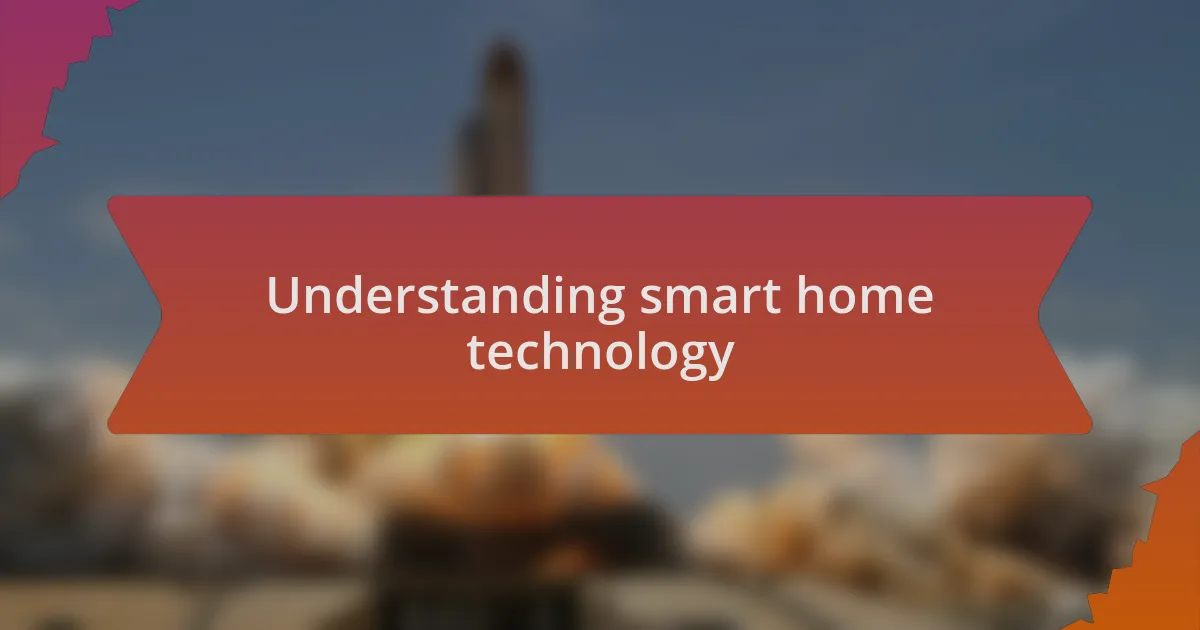
Understanding smart home technology
Smart home technology refers to a suite of devices that interconnect and enhance control over various aspects of daily life, primarily through the internet. I remember the first time I set up a smart thermostat in my home. It amazed me how I could adjust the temperature from my phone, saving energy while ensuring comfort. Hasn’t it become fascinating how simple adjustments can have such a big impact?
These devices range from smart speakers to security cameras, all designed to streamline our routines. I’ve found that having smart lighting can shift the mood in an instant—just a simple voice command and the atmosphere changes. Can you imagine hosting a dinner where the lights can adapt to the conversation or music playing in the background?
Understanding smart home technology isn’t just about the gadgets themselves; it’s about the value they add to our lives. For instance, with smart locks, I no longer worry about forgetting my keys. It’s comforting to know that I can grant access to friends or family remotely. What other conveniences can these technologies bring to our day-to-day lives?
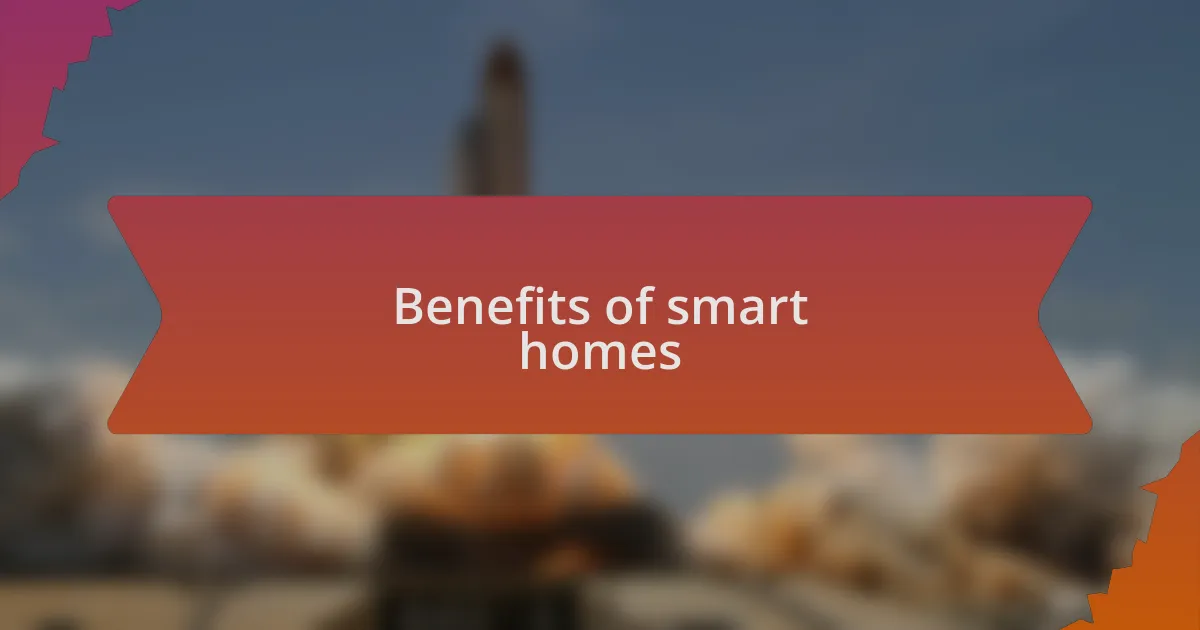
Benefits of smart homes
One of the standout benefits of smart homes is their ability to enhance energy efficiency. I vividly recall switching to smart lighting; not only did it save me money, but the automatic scheduling meant I never had to worry about leaving a light on again. Isn’t it incredible to think that technology can genuinely contribute to both our wallets and the planet?
Smart home devices also offer a level of convenience that transforms everyday tasks. For example, I love using my smart assistant to compile my grocery list while I cook—it’s like having a personal helper without the extra hands in the kitchen. Can you imagine freeing up your mental space like that, allowing you to focus on the things that truly matter?
Lastly, security is a major advantage that gives me peace of mind. With my smart security system in place, I can monitor my home in real time from anywhere. I still remember the anxiety I felt after forgetting to lock the door during a vacation. Now, that uncertainty is replaced with confidence. Isn’t it reassuring to feel safe, knowing you can keep an eye on your home no matter where you are?
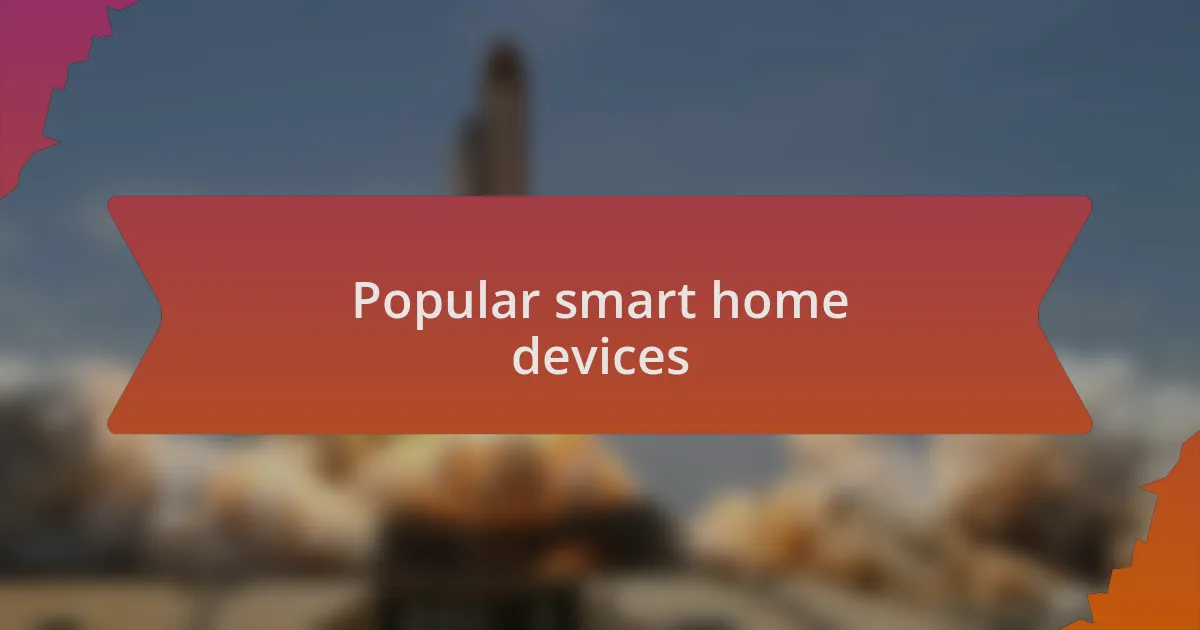
Popular smart home devices
Smart doorbells, like the ones equipped with cameras, have really changed my routine. I can’t tell you how many times I’ve been caught off guard at the door, but now, I get instant alerts on my phone whenever someone approaches. It’s almost like having a virtual doorman; I can decide whether to answer without even getting up. Have you ever experienced that sense of control over your front door? It’s empowering.
Another popular smart device is the smart thermostat, which has been a game-changer in my home. I installed one last year and was amazed by how it learned my schedule, adjusting the temperature automatically. I remember one chilly evening coming home to a warm house—it felt like a big hug after a long day. Have you ever felt that bliss of walking into a perfectly temperate environment? It’s little things like this that make a big difference.
Let’s not forget smart speakers, which have become an essential part of my daily life. They don’t just play my favorite tunes; they answer questions, set reminders, and even control other smart devices around the house. Recently, I asked mine about the weather, and it not only provided the forecast but also played my morning playlist to start the day right. Isn’t it fascinating how these devices can blend seamlessly into our lives, making everyday tasks more enjoyable?
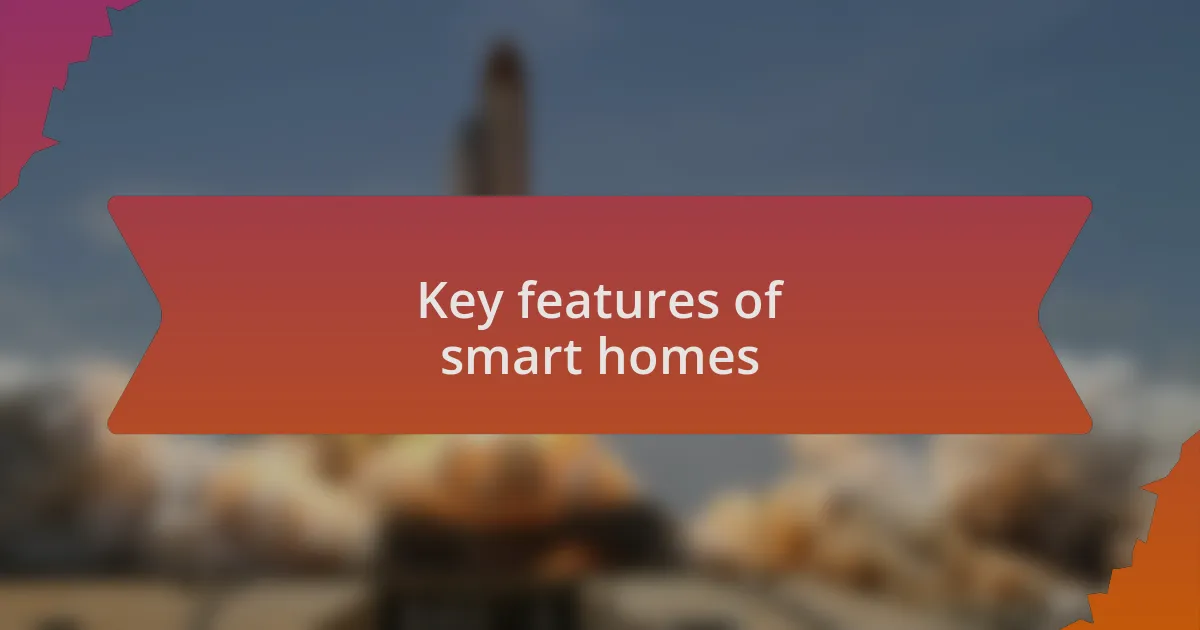
Key features of smart homes
The heart of a smart home lies in its automation capabilities. Picture this: I wake up in the morning to the sound of my blinds gently opening, allowing natural light to pour in. It’s amazing how my smart systems coordinate everything—my coffee starts brewing, and the thermostat adjusts to a cozy temperature, all before I even get out of bed. Isn’t it incredible how such seamless technology can transform a simple morning routine into a highly efficient experience?
Another key feature is the integration of various devices into a single ecosystem. My smart home hub acts like the conductor of an orchestra, ensuring that my security cameras, lights, and appliances communicate effortlessly. For instance, when I leave the house, I can activate a “goodbye” scene with a single command. All the lights turn off, the doors lock, and my security system arms itself, giving me peace of mind. Have you ever felt the relief of knowing your home is secure, all with just a tap on your phone?
Energy efficiency is also a significant aspect that I appreciate about smart homes. I noticed a considerable reduction in my electricity bill after installing smart bulbs, which adjust brightness based on the time of day. It’s not just about saving money; it feels great to know that I’m reducing my carbon footprint as well. Have you ever thought about how small changes in your home can contribute to a healthier planet? It’s rewarding to be both smart and eco-friendly.
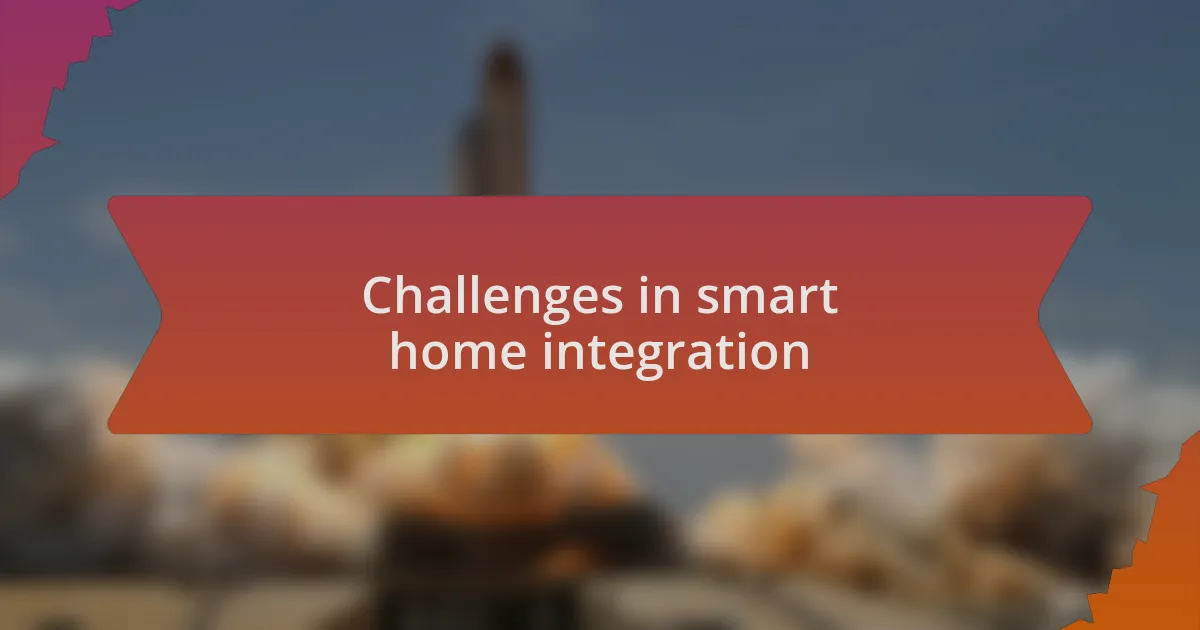
Challenges in smart home integration
Integrating smart home technology can sometimes feel like assembling a complicated puzzle. For instance, I once encountered compatibility issues when trying to connect my smart light bulbs with my existing security system. The frustration was real when I discovered that not all devices speak the same language. Have you ever felt that sinking feeling of excitement turning to disappointment when technology just won’t cooperate?
Another challenge is the potential for privacy concerns. I remember having a conversation with a friend who was hesitant to install smart devices due to fears of hacking. While I assured her that taking precautions like using strong passwords can mitigate risks, it’s hard to shake off that feeling of vulnerability. Isn’t it unsettling to think about how much personal data flows through these devices?
Lastly, the initial cost of setting up a smart home can be daunting. When I first dove into this world, I was taken aback by the price tags attached to quality devices. It’s a hefty investment that can make anyone pause and reconsider. Have you ever hesitated to splurge on something that promises convenience, only to wonder if it’s worth every penny? Balancing the benefits against the financial commitment is something many of us grapple with.